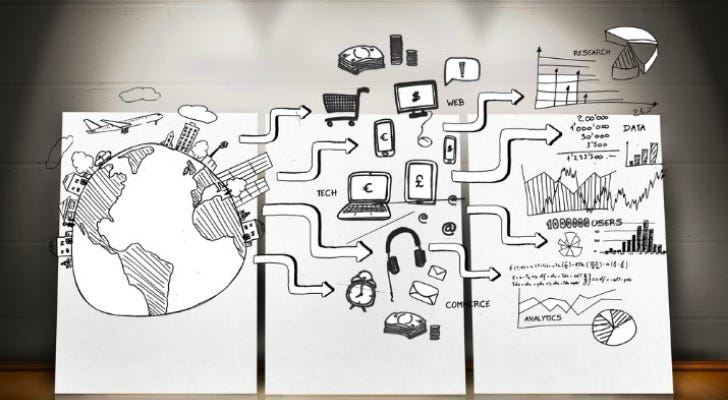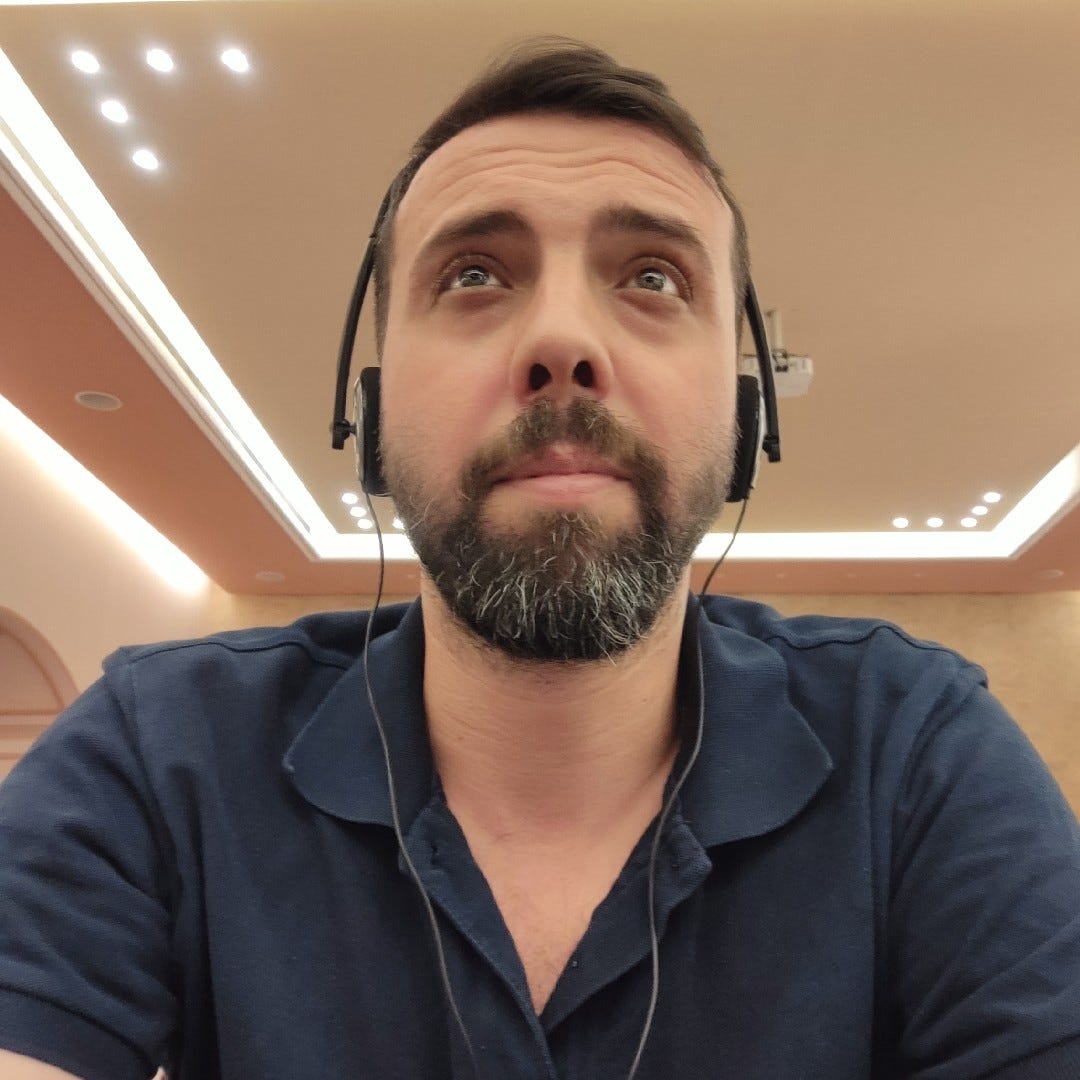A Criticism of Maslow's Hierarchy of Needs in the Rapidly Changing Digital Era
A critism of the Hierarchy of Needs in the scope of digitalization.
We are in a rapidly changing time. You often hear this from friends or family: “I don't understand how today, this week, this month went. Everything is so fast!” Yes, everything is very fast now. I will not take the subject to a spiritual level here. However, it is evident that there is a change in our perception of time, or more precisely, there is a change in our need for time and a severe change in the way we meet this need. Or the severity of the need!
Actually, it is more than just a matter of time! The issue is generally about a massive increase in the things we need. And we still try to meet our needs hysterically in a time when technology is rapidly developing and changing! Everybody tries to stick with the ever-changing technology. Compared to 15-20 years ago, we can now get answers to our inquiries about our needs in a much shorter time. Developing technology may lead to diversifying human needs, or it may create the perception that everything is fast because we now have the ability to meet our needs randomly.
Since humankind first appeared on Earth 2.5 million years ago, it has undergone tremendous anatomical changes. In order to adapt to its environment and further ensure the continuity of its species, it transformed itself (which is called evolution) and reached its current form. This transformation was triggered and realised due to existential, environmental, and vital factors becoming more cognitively complex with the beginning of the modern era. Multiway changes in thinking and perspectives have carried human life to different dimensions and supported it to survive until today. These multiway changes over time have led to an effort to define the relationships between humans and society correctly, accurately describe the path from micro to macro, and find the correct answers to problems with suitable approaches. The transformation continues from its current form to the next one (Keep this last sentence in mind; I’ll link it to the main idea of this article at the end).
One day, in the developmental journey of science, a man approached humans realistically and carried out studies to understand and categorise their needs. Eighty years ago, American Psychologist Abraham Maslow proposed a theory about how and in what order needs are formed in a person. The theory developed by Maslow tried to tell us how human necessities progress from existence to the highest point of human development.
Maslow for Starters
The Hierarchy of Needs is a popular theory studied and proposed to comprehend the framework of human needs and their progression. It has been questioned and studied multiple times over the decades. Abraham Maslow's Hierarchy of Needs is a psychological theory proposed in his 1943 article, "A Theory of Human Motivation." The theory suggests that human requirements can be organised as a hierarchical pyramid, with lower-level requirements that must be satisfied before higher-level requirements become appealing. The hierarchy is often portrayed as a pyramid with five layers, from the most basic physiological needs at the base to the highest level of personal development at the apex.
Here is a concise description of each tier:
Physiological Needs: These are the basic survival needs, such as food, water, shelter, and sleep. According to the theory, an individual has to satisfy these needs first to move on to higher levels of the hierarchy. If the person can not achieve this level successfully, there is no way to go further, we can say!
Safety Needs: Individuals seek safety and security once physiological needs are met. This includes physical safety, financial security, health, and protection from unforeseen events. This level can be identified as the level at which we start constructing a habitat for ourselves.
Social Needs (Love and Belonging): After safety is assured, people seek social connections, love, and a sense of belonging. This involves relationships with family and friends and feeling part of a community.
Esteem Needs: After social needs are fulfilled, individuals seek self-esteem and the esteem of others. This includes a desire for achievement, recognition, and respect. This is the level that you become a fulfilled person to self-actualise yourself.
Self-actualisation: At the top of the hierarchy is the need for self-actualisation, which involves realising one's full potential, achieving personal growth, and pursuing personal goals.
Criticisms About the Theory
While Maslow's Hierarchy of Needs has provided valuable insights into human motivation, it has limitations. Critics argue that it oversimplifies the complexity of human behaviour, neglects cultural variations, and lacks empirical solid support. Researchers continue to explore and refine theories that better capture the intricacies of human motivation and well-being. Considering the current human lifestyle, there are a couple of the critics I like the most.
One significant criticism is that Maslow's theory may be culturally biased, as it was primarily based on observations of Western cultures. The hierarchy may not be universally applicable, as cultural variations can influence the prioritisation and significance of different needs.
The second criticism is how Maslow's theory may need to consider the impact of cultural variations in the importance assigned to different needs sufficiently. The prioritisation of needs can vary significantly across cultures, and the hierarchy may not capture these nuances.
There are many criticisms of the theory. If I want to mention them in this article, it will take a very long paper I need to complete. But let’s keep it short and come to the main course of this article, where I told you I would link the idea at the end.
Needs in the Digital Era
Thanks to rapidly changing technology, people have become acquainted with many tools to meet their needs. Technological developments, which have gained significant momentum, especially in the last 20 years, have now exceeded meeting people's needs! For example, thousands of dating apps exist, and people use them as social media tools. And people use not just one but many at the same time. This also applies to other social media tools. For example, which social media applications do you have on your phone? More than 1, right? This is not a situation where I can criticise the individual. On the contrary, it is part of daily life. Because of these tools or applications, we meet our daily needs and, therefore, the physiological and psychological needs we need as an individual. There is a digital tool for issues we want to feel safe about. There is a digital tool to make us think we are social and loved. There is a tool that manages our money. There is another tool with which we can feel confident and booming…
Some of the digital infrastructures we use respond to more than one of the need levels specified in the Hierarchy of Needs. For example, the application called “LinkedIn” can answer the social, esteem and self-actualisation levels altogether and provides the opportunity to realise yourself very quickly, maybe artificially, and to announce the whole reality(!) about your self-actualisation to your target audience. While doing this, these three levels of the Hierarchy of Needs are intertwined.
Today’s modern life offers no other options than digitalisation to individuals. Considering what happened in the last three years, you will understand what I mean more easily. We were unprepared, and a pandemic caught humanity too severely! We had to update our daily routines with digital alternatives very quickly. Many digital tools have entered our lives, almost like a slap in the face. And we couldn’t easily say goodbye to those digital habits we acquired during the pandemic, even if all is well! For example, I still shop at grocery stores with a mobile application that provides home delivery service. There are many examples like this.
When Maslow was working on understanding human needs, most of the world's population did not even have essential technological inventions such as television and telephone, the tech of that time. Here, I am not trying to refute Maslow's theory. On the contrary, I defend that the idea is produced from a universal point of view. However, I do not ignore that some things have changed, and human life has greatly transformed. To comment on a psychological phenomenon, we must consider the environmental factors that affect this phenomenon. From this perspective, the environmental factors in the 1940s and the environmental factors in the 2020s have nothing to do with each other. This is precisely what I emphasise!
If technological developments continue this fast, we may see specialised products and services 20 years from now that we saw and admired in the movie Back to the Future 40 years ago. Artificial insemination, artificial womb, AI, autonomous digitalised farming applications, digital cities, etc. Everything that changes how we live life and exist also changes the things we need and how we meet our needs. These changes occur so rapidly that different needs can often be met in an intertwined manner. It's like a colour chart turning white…
The question that needs to be asked here is exactly this:
Does Maslow's Hierarchy of Needs fully meet the needs hierarchy of the Digital era?
I think Maslow would ask the same question!
Special thanks to my dearest friend, Dr.Habibe Aksit, for encouraging me to start writing!
Please subscribe if you liked this article and would like to support me.






